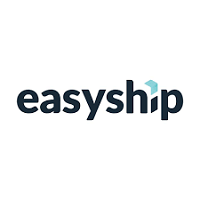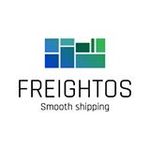What Is Freight Software?
Freight software, sometimes referred to as transportation management software (TMS), is a specialized application used to expedite and optimize shipping and logistics procedures. Freight software has grown to be a vital tool for companies that depend on economical and successful shipping strategies due to the transportation sector's growing complexity and demand.
Fundamentally, freight software gives companies real-time information and supply chain visibility while allowing them to control and track their shipments from beginning to end. Numerous capabilities, such as order management, carrier selection, freight rate computation, and route planning, enable this. Increased efficiency is one of the main advantages of employing freight software.
Businesses may manage their shipping procedures more efficiently, saving time and minimizing errors, when all the required data and resources are in one location. By offering information on the most economical carriers and routes, this program can also aid in cost savings. Freight software also provides smooth connectivity with other corporate systems and apps, which streamlines and improves the accuracy of data management and analysis in today's digitally driven environment.
A strong freight software is an essential tool for everyone handling shipping and logistics, regardless of size, giving them a competitive edge in the transportation sector. It's crucial to take your needs and budget into account while looking for the best freight software.
Tracking and visibility, automation capabilities, analytics and reporting, and integration possibilities are some of the most important aspects to search for. Businesses may increase productivity, streamline their shipping procedures, and accomplish their objectives with the help of the appropriate freight software.
What Are The Recent Trends In Freight Software?
Thanks to technological improvements, the freight business has seen tremendous transformation in recent years. The need for simplified and effective freight solutions has increased dramatically with the growth of e-commerce. The market for freight software has therefore changed as well, providing a variety of features and functionalities to satisfy the constantly shifting demands of enterprises. We will examine some of the noteworthy freight software trends in this buyer's guide so you can make an informed choice for your company.
1. Cloud-Based Programs: The delivery and accessibility of software have been completely transformed by cloud computing. Cloud-based solutions are becoming more and more popular in the freight business because of their cost-effectiveness, scalability, and accessibility. By doing away with the requirement for on-premise servers, these solutions enable companies to store and retrieve their operations and data on a centralized, secure cloud-based platform. As global supply chains and e-commerce have grown, cloud-based freight software has become essential for companies trying to remain competitive.
2. Tracking And Visibility In Real Time: The absence of visibility and tracking capabilities is one of the major issues facing the freight sector. However, real-time tracking and visibility are now possible because to the incorporation of GPS and RFID technologies into freight software. This makes it possible for companies to follow their products from the warehouse to the point of delivery, giving clients precise and timely updates. In addition to increasing customer happiness, real-time tracking and visibility aid in spotting supply chain problems or delays so that preventative action can be taken.
3. Machine Learning (ML) And Artificial Intelligence (AI): By automating procedures, streamlining routes, and forecasting demand, AI and ML have the potential to revolutionize the freight sector. Businesses may discover inefficiencies, make data-driven decisions, and obtain insights into their operations by integrating AI and ML into freight software. This increases the supply chain's overall efficiency in addition to lowering costs.
4. System integration: Businesses in today's digital environment use a variety of technologies to oversee their diverse activities. Overall efficiency may be greatly increased and errors in manual data entry can be eliminated with freight software that provides smooth connection with other systems like supply chain management, accounting, and inventory. Integration also allows for better communication and collaboration between different departments, making the entire process more efficient.
5. Applications For Mobile Devices: Mobile-enabled freight software has become more and more necessary as more companies embrace remote labor and flexible scheduling. Businesses may access their freight operations while on the go with the use of mobile applications, which offer real-time notifications and updates. This helps companies to keep in constant communication with stakeholders, expedite procedures, and make decisions quickly.
Benefits Of Using Freight Software
For companies of all sizes operating in the logistics and transportation sector, freight software is an effective instrument that offers a host of advantages. This program has a number of features that can help businesses save time, money, and resources, from improving efficiency to streamlining operations.
We will go over the main advantages of freight software as well as how it may help your company succeed in the cutthroat market of today.
1. Automates And Streamlines Procedures: The capacity of freight software to automate and streamline a variety of activities is one of its greatest benefits. Businesses may save time and get rid of manual errors with services like order management, tracking, and invoicing. This lowers the possibility of delays or lost shipments while also increasing accuracy and speeding up procedures.
2. Simplifies Communication And Cooperation: Coordinating with several stakeholders can be extremely difficult for companies in the transportation sector. Businesses can maintain real-time connections with carriers, clients, and other partners by using freight software, which offers a consolidated platform for communication and cooperation. This increases productivity and guarantees supply chain transparency.
3. Real-Time Tracking And Visibility: Businesses can track the flow of shipments at every stage thanks to freight software's real-time tracking and visibility features. This feature helps companies to proactively handle any possible delays or problems and is essential for on-time delivery. Customers are more satisfied with the services and receive transparency thanks to real-time tracking.
4. Cost-Effective: Businesses can save a lot of money by implementing freight software. Businesses may save transportation expenses, increase fleet utilization, and cut down on empty miles with features like automated pricing and route optimization. Long-term cost savings are achieved by detecting and removing supply chain inefficiencies with the use of the software.
5. Enhances Customer Service: Maintaining customers in today's cutthroat market requires offering outstanding customer service. Businesses can give their clients precise tracking information, on-time package delivery, and simplified communication by using freight software. Customers are more satisfied with the services and trust is also increased as a result of this.
6. Integrated Analytics And Reporting: Freight software gives organizations useful insights into their operations through its sophisticated reporting and analytics features. This contains information on important performance metrics such carrier performance, transportation expenses, and on-time delivery rates. Businesses can use these insights to spot patterns, make informed decisions, and increase productivity.
Important Factors To Consider While Purchasing Freight Software?
It is crucial to take into account a number of criteria while choosing freight software for your company in order to make the best decision. When buying freight software, the following are some of the most crucial considerations:
1. Scalability: The software's scalability is one of the most important considerations. Your shipping requirements will expand along with your business. As a result, the software you select needs to be flexible enough to meet your company's evolving needs.
2. Functioning: Carefully consider the software's functioning prior to making a purchase. It ought to be capable of managing carriers, tracking, and reporting, among other facets of shipping. Verify that its characteristics meet your company's requirements.
3. Integration: Integration is essential in the fast-paced commercial world of today. Seek out freight software that works well with the ERP, CRM, and WMS that you now have. This will lower the possibility of mistakes and help you optimize your shipping processes.
4. User-Friendly Interface: Software adoption and use are made easier with a user-friendly interface. For your staff to use it efficiently, it should be simple to understand and require little training. A complex interface could lead to low productivity and user adoption.
5. Customization: Since every company has different shipping needs, it is essential to spend money on software that can be altered. Seek out freight software that lets you customize it to meet your unique requirements, whether that means adding new features or making bespoke reports. 6. Customer service: Take into account the vendor's degree of customer support when choosing a freight software. If you have any problems or questions, you should be able to get help from technical support. To assess the response and dependability of the vendor, look through reviews and references.
7. Security And Data Protection: Given the increase in cyberthreats, security and data protection must be given top priority. To safeguard your private information, look for freight software that has strong security features including data encryption and safe data storage.
8. Cost: Finally, think about how much the software will cost and if it will fit into your budget. When making your choice, don't forget to account for long-term costs like maintenance and upgrading fees.
What Are The Key Features To Look For In Freight Software?
There are a number of important factors to take into account while searching for freight software in order to guarantee the seamless and effective functioning of your company's shipping and logistics operations.
1. Centralized Management System: A centralized management system is one of the most crucial characteristics to search for in freight software. This enables you to create and track shipments, manage inventory, and generate reports all of which are part of your shipping and logistics operations from a single platform. This lowers the possibility of mistakes and delays in addition to saving time.
2. Real-Time Tracking And Visibility: Any freight software must have the capability to track shipments in real-time. Choose software that lets you track and see your shipments in real time so you can keep an eye on their progress at every stage. This allows you to react promptly to any unforeseen delays or problems in addition to keeping you informed.
3. Automation And Integration: These two aspects should also be taken into account. To save you time and effort, a smart freight software should be able to automate repetitive operations like data entry and invoice production. To guarantee efficient data flow and optimized procedures, it should also be able to interact with other systems, like your ERP or CRM.
4. Modification And Scalability: It's critical to select freight software that enables modification because every company has different shipping and logistics requirements. Whether you need to add new features or create custom reports, look for software that can be customized to meet your needs. Scalability must also be taken into account because your company may expand and change over time.
5. Document Management: In the shipping and logistics sector, keeping track of documents and paperwork may be a laborious and time-consuming task. Therefore, strong document management features should be a feature of any decent freight software. This involves the digitalization of paper documents, their quick retrieval, and electronic document storage, which facilitates the management and sharing of critical papers with clients and carriers.
6. Fleet Management: Seek out freight software with fleet management features if you have your own fleet of shipping trucks. This include scheduling maintenance, optimizing routes, and tracking drivers and vehicles. These characteristics can lower fuel expenses, increase fleet efficiency, and guarantee on-time delivery of goods.
Why Do Businesses Need Freight Software?
The transportation and logistics sector is essential to the success of businesses in a variety of industries in the fast-paced commercial world of today. Businesses must manage their freight operations effectively since goods must be delivered from one location to another on a regular basis. Freight software is useful in this situation. Freight software, sometimes referred to as transportation management systems (TMS), is a technological solution created especially for the logistics and transportation sector. It simplifies every step of the freight process, including planning, carrying out, monitoring, and reporting.
But why is it necessary for businesses? Let's examine its advantages in more detail.
1. Increased Productivity And Efficiency: It takes a lot of time, energy, and resources to manage freight operations effectively. Manual procedures can be laborious and prone to mistakes, which can result in delays, higher expenses, and unhappy clients. The time and effort required to manage shipments is decreased by the automation and simplification of numerous activities provided by freight software. Consequently, this raises the company's general production and efficiency.
2. Tracking And Visibility In Real Time Businesses can track and keep an eye on their shipments in real time with freight software. They have total visibility and control over their freight operations as a result. Businesses can obtain precise and current information, including the shipment's location, condition, and anticipated arrival time. This guarantees a seamless and on-time delivery by assisting them in making well-informed decisions and promptly resolving any potential problems.
3. Financial Savings: Businesses can save money in a variety of ways with freight software. It lowers transportation costs by optimizing routes and carrier choices. Additionally, it reduces human error, preventing further fees and penalties. Businesses can also steer clear of expensive delays and disruptions with improved visibility and management. Additionally, freight software can offer useful analytics and insights to assist companies in pinpointing areas where they can reduce costs and boost productivity.
4. Simplified Interaction And Cooperation: It can be difficult and time-consuming to coordinate with suppliers, carriers, and other stakeholders. By giving all stakeholders engaged in the freight process a consolidated platform, freight software facilitates communication and teamwork. A more effective and easy shipping procedure results from improved communication, fewer mistakes, and everyone being in agreement.
5. The Ability To Scale And Adapt: Freight operations get increasingly complicated and demanding as businesses develop and expand. A scalable solution, freight software may expand and change to meet a company's evolving demands. This implies that when companies grow and take on increasingly difficult logistics problems, they may keep utilizing the software.
How Much Time Is Required To Implement Freight Software?
The complexity of the program, the size of your company, and the degree of customization needed can all affect how long it takes to integrate freight software. The installation phase typically takes four to twelve weeks. To guarantee a seamless transition, you will need to assign resources and collaborate closely with the software vendor at this period.
Usually, a consultation is the first stage to evaluate your company's needs and identify the features and functionalities required for your operations. Data migration and team training are the first steps in the implementation process after the program has been chosen. Depending on how much data needs to be moved and how many people will be utilizing the program, this could take a few weeks.
Configuring the software in accordance with your business processes and establishing any system integrations come next after the data has been moved. In order to guarantee that the software is smoothly incorporated into your operations, this crucial stage could take a few weeks. Testing the program, making any necessary modifications, and teaching your team how to utilize it efficiently comprise the last phase of installation.
This could take a few weeks to finish, but it is essential to a successful implementation. The advantages of employing freight software greatly exceed the initial time and resource commitment, even though the implementation procedure may seem time-consuming. In the long run, the program will save you time and money by streamlining your operations and increasing efficiency.
What Is The Level Of Customization Available In Freight Software?
The level of customization available in freight software can vary depending on the specific provider and their features. However, in general, most freight software programs offer a high level of customization to meet the unique needs of each business and their freight operations. This allows companies to have a tailored solution that fits their specific processes and requirements.
When considering freight software options, it is important to look for providers that offer a variety of customizable features. This can include customizable dashboards, reports, workflows, and integrations with other systems. With customizable dashboards, businesses can choose which data and metrics they want to monitor and have it displayed in a way that makes sense for their operations.
Customizable reports allow for businesses to analyze and track their freight activity in a way that is most useful and relevant to them. This can include reports on shipment status, carrier performance, and financial data. The ability to customize workflows within the software also allows businesses to automate processes and streamline their freight operations according to their specific requirements.
Furthermore, many freight software providers offer integrations with other systems, such as accounting or ERP software, to further enhance the customization capabilities. This allows for seamless data transfer and a centralized system for all freight-related tasks. It is important for businesses to carefully consider their specific needs and processes when evaluating the level of customization offered by different freight software providers.
By choosing a program with a high level of customization, companies can optimize their freight operations and improve efficiency, ultimately leading to cost savings and increased productivity.
Which Industries Can Benefit The Most From Freight Software?
For companies operating in the logistics and transportation sector, freight software has become a vital tool. But its advantages extend beyond this particular industry. In actuality, utilizing freight software in business operations may be very advantageous for a number of industries.
1. Manufacturing Industry: The effective transportation of raw materials and completed items is crucial to manufacturing businesses. The supply chain can be streamlined with the use of freight software, which guarantees the prompt delivery of both raw materials and completed items. Additionally, it offers real-time visibility and tracking, which is essential for manufacturers to meet client demand and maintain inventory levels.
2. Retail Industry: To maintain a seamless supply chain, prompt delivery is essential in the retail sector. Retailers can manage their inventory and make sure their products arrive at stores on schedule with the use of freight software. Additionally, it aids in route optimization and multiple shipment management, which lowers costs and speeds up delivery.
3. E-Commerce Sector: The way people shop has changed as a result of e-commerce companies, and freight software has been crucial to this development. E-commerce businesses stand to gain a great deal from the use of freight software, given the growing demand for precise and quick delivery. It facilitates package tracking, order fulfillment management, and giving clients real-time delivery updates.
4. Food And Beverage Industry: This sector is subject to stringent laws and must distribute and transport its temperature-sensitive goods with care. Food and beverage products are guaranteed to arrive at their destination in the best possible condition thanks to freight software's temperature monitoring and tracking features. It also lowers transportation expenses and aids in supply chain management.
5. Healthcare Sector: The prompt delivery of pharmaceuticals, medical equipment, and supplies is crucial to the healthcare sector. The intricate logistics of shipping these goods can be managed with the use of freight software. Additionally, it offers temperature monitoring and real-time tracking, guaranteeing the products' timely and safe delivery.
Conclusion
In summary, using freight software can significantly increase your company's productivity and profitability in the freight sector. This kind of software can provide you with a competitive advantage in the market by optimizing procedures, offering real-time visibility, and facilitating improved decision-making. It's crucial to thoroughly evaluate your company's requirements and investigate your possibilities before making a purchase.
To make sure you select the finest option for your business, take into account elements like price, features, and customer service. To gain their opinion and support, make sure to include your team in the decision-making process as well. For the program to be used efficiently and produce the intended effects, training and appropriate implementation are essential.
Keep in mind that purchasing freight software is an investment in your company's future prosperity. To fully utilize its possibilities and maintain your lead in the always changing freight sector, keep assessing and improving your utilization. We really hope that this buyer's guide has given you insightful information and assisted you in making a wise choice.






















